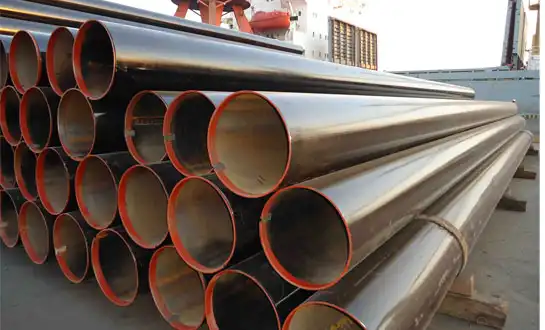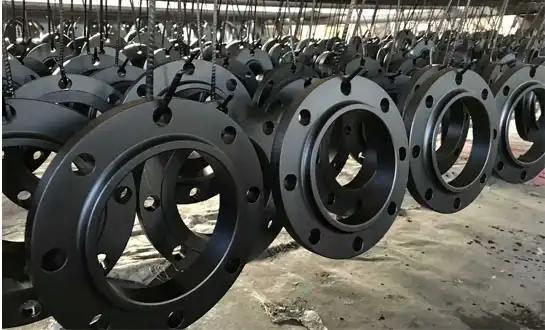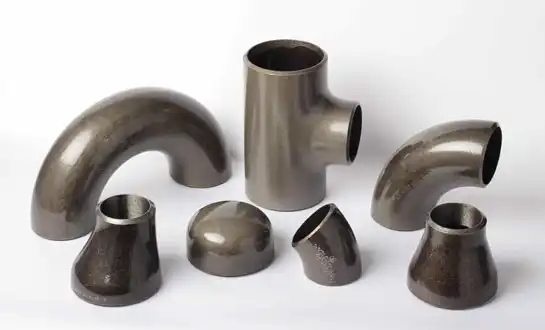Helium Leak Test Applications in Cryogenic Industrial Pipe Components
Ensuring absolute leak integrity in cryogenic piping systems represents one of the most critical quality assurance challenges facing industries handling liquefied gases, hydrogen, and ultra-low temperature fluids. Helium leak testing has emerged as the gold standard detection method for identifying even microscopic leaks in cryogenic piping components, offering sensitivity levels unmatched by conventional pressure testing or bubble testing techniques. The unique properties of helium including its small atomic size, inert nature, and ease of detection make it ideally suited for verifying the integrity of welded joints, valve seats, flange connections, and other potential leak paths in systems operating at temperatures approaching absolute zero. Cryogenic applications demand zero-tolerance leak specifications since even minute leaks cause product losses, create safety hazards through oxygen displacement or flammable vapor accumulation, and compromise thermal efficiency through increased boil-off rates. This article explores the technical principles, testing methodologies, and practical applications of helium leak testing specifically tailored for cryogenic piping components serving LNG facilities, industrial gas production, aerospace propulsion systems, and research installations.
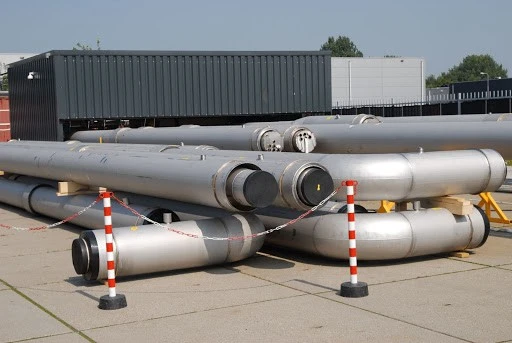
Fundamentals of Helium Leak Testing Technology
Physical Properties Making Helium Ideal for Leak Detection
Helium possesses a unique combination of physical characteristics that make it exceptionally effective for detecting leaks in cryogenic piping systems where conventional methods prove inadequate. As the second smallest element after hydrogen, helium atoms penetrate through leak paths too small for larger molecules, revealing defects that would otherwise remain undetected until catastrophic failure occurs during service. The inert chemical nature of helium eliminates reactivity concerns when testing cryogenic piping fabricated from various materials including stainless steels, aluminum alloys, and nickel-based metals. Helium remains gaseous across all practical temperature ranges, enabling consistent testing protocols for cryogenic piping components regardless of ambient conditions. The low density and high diffusion rate of helium allow rapid testing cycles, with helium quickly penetrating through leak paths and reaching detection equipment within seconds. Modern helium mass spectrometer leak detectors achieve sensitivity levels detecting leaks as small as one-billionth of a standard cubic centimeter per second, far exceeding capabilities of pressure decay testing or soap bubble methods.
Mass Spectrometry Detection Principles
Utilizing advanced mass spectrometry technology, helium leak detectors specifically identify and quantify helium molecules compared to background gases. This provides accurate leak rate measurements for quality assurance programs for cryogenic piping. The process of detection starts when test gas goes through an ionization chamber. In this chamber, electrons hit molecules, making positively charged ions whose paths depend on how much mass they have compared to their charge. Ion tracks are bent by electromagnetic fields inside the mass spectrometer. Lighter helium ions follow tighter curves than heavier nitrogen or oxygen ions, which lets only helium be detected. Modern leak detectors have multiple filtering stages that get rid of interference from other gases. This makes sure that helium measurements are accurate even when checking cryogenic piping in industrial settings with a lot of different air pollutants. It is very sensitive and can find leaks that release only micrograms of helium per year. This gives people faith that tested cryogenic piping meets strict requirements. When you use certified helium leak standards in calibration methods, you can track the accuracy of quantitative measurements and meet the quality documentation needs for important cryogenic piping installations.
Sensitivity Levels and Detection Limits
Understanding the relationship between leak rates, detection sensitivity, and practical acceptance criteria helps engineers specify appropriate helium leak testing requirements for cryogenic piping applications. Standard leak rate units express helium flow in standard cubic centimeters per second, with typical cryogenic piping specifications requiring leak rates below one-millionth of a standard cubic centimeter per second for critical applications. The actual sensitivity achievable depends on factors including detector performance, background helium concentrations, pumping speed, test duration, and component geometry. Vacuum testing methods where cryogenic piping components reside in evacuated chambers achieve the highest sensitivity levels, detecting leaks several orders of magnitude smaller than sniffer probe techniques. The practical detection limit for any specific application balances testing economics against consequences of undetected leaks, with life-critical cryogenic piping systems justifying extensive testing while less critical applications accept higher thresholds. Background helium in atmospheric air establishes baseline noise levels that testing protocols must overcome through proper technique selection.
Testing Methods for Cryogenic Piping Components
Vacuum Chamber Testing for Maximum Sensitivity
The most accurate way to check for leaks in cryogenic piping parts is to use a vacuum chamber and helium. This method works especially well for recently made items that are going through their final quality review. This test involves putting parts in vacuum tanks that are linked to helium mass spectrometer leak detectors, letting the air out until it's very low pressure, and then adding helium tracer gas to the inside of the part to make it pressurized. Any breaches in the cryogenic piping part let helium escape into the empty room, where detection equipment finds and measures leak rates right away with great accuracy. It works great for testing welded cryogenic piping systems like heat exchanger bundles, complex manifolds, and vacuum-jacketed transfer lines. Leak rates are not affected by differences in atmospheric pressure in a vacuum environment, so measurements are accurate and represent how cryogenic piping systems really work. By inspecting whole assemblies at the same time, chamber testing can quickly find all leaks during a single test run. Documentation systems keep track of defect test results and part serial numbers, creating quality records that meet the needs for tracking in important applications.
Sniffer Probe Scanning Techniques
Sniffer probe helium leak testing is useful for checking installed cryogenic piping systems in the field and for quality control in manufacturing where vacuum chamber testing isn't possible because of the size or shape of the parts. Using this method, helium tracer gas mixtures are used to pressurize parts of cryogenic piping. Handheld probes attached to portable helium leak detectors are then used to consistently scan the outside surfaces. Helium that is escaping is drawn into the probe through sampling tubes and reaches mass spectrometer sensors. These sensors send audio signals and computer displays to operators to let them know where the leaks are. For sniffer testing of cryogenic piping to work, it needs to be done in a methodical way, with controlled probe speeds going over all possible leak points, such as weld seams, flange connections, and valve stems. Helium plumes from leaks are spread out by wind and air currents, which could mean that detections are missed if the probe scans too quickly. Plastic enclosures or containment hoods around places that might be leaking helium gases concentrate them, making it more likely that a leak will be found. Because the method gives quick information about where the leaks are, repairs can begin right away.
Accumulation Testing for Large Volume Systems
Accumulation or bombing techniques adapt helium leak testing principles for large cryogenic piping systems where direct pressurization with helium proves economically prohibitive. The method pressurizes systems externally with helium using sealed enclosures surrounding suspected leak areas in cryogenic piping, allowing helium to penetrate inward through leaks over extended dwell periods typically ranging from hours to days. After sufficient accumulation time, technicians evacuate cryogenic piping interiors while monitoring effluent with helium leak detectors that identify accumulated helium quantities indicating leak presence. This reverse pressure approach particularly suits testing of large vacuum-jacketed cryogenic piping installations where maintaining internal vacuum represents normal operating condition. Accumulation testing sensitivity depends on exposure duration, helium concentration in bombing environment, and leak path characteristics. Extended dwell periods enable detection of extremely small leaks that might escape detection during rapid sniffer scanning or short-duration vacuum testing.
Industry Applications and Quality Standards
LNG Facility Installation and Maintenance
Liquefied natural gas facilities extensively employ helium leak testing throughout cryogenic piping lifecycles from manufacturing verification through operational maintenance programs. New construction projects specify helium leak testing for critical cryogenic piping including transfer lines between storage tanks and marine loading arms, vaporizer feed systems, and vacuum-jacketed piping networks. Acceptance criteria for LNG cryogenic piping typically specify maximum allowable leak rates in the range of one-millionth standard cubic centimeter per second for pressure boundary components. Field repairs to operational cryogenic piping following maintenance activities require helium leak testing verification before returning systems to service. Periodic inspection programs incorporate helium leak testing to monitor degradation in aging cryogenic piping, identifying deterioration before minor leaks escalate into major failures.
Aerospace and Defense Cryogenic Systems
Cryogenic piping used in space launch vehicles and satellite propulsion systems must be completely leak-proof in order to perform their missions. For aerospace cryogenic piping systems, leak rates must be many orders of magnitude lower than those needed in industry. Often, leak rates must be less than one hundred billionth of a standard cubic centimeter per second. During production, assembly, and pre-launch preparations, flight gear is tested for helium leaks several times. Space apps use cryogenic piping, and if it fails, it can cause mission loss and put crew safety at risk. This is why huge amounts of money need to be spent on testing that goes far beyond what is required by industry standards.
Medical and Research Laboratory Systems
For medical and research sites that use cryogenic piping for particle accelerators and magnetic resonance imaging systems, helium leak testing is needed to make sure the system is working properly and stop expensive cryogen losses. Cryogenic piping keeps liquid helium in superconducting magnet systems, and leak testing requirements make sure there is very little helium loss. The lack of helium in the world makes leak-tight cryogenic piping systems even more important. Because of this, thorough helium leak testing is now a cost-effective way to save cryogen. For safety reasons in the lab, cryogenic piping must not leak, keeping people from suffocating in small areas.
Conclusion
Helium leak testing provides unmatched sensitivity and reliability for verifying cryogenic piping supplier integrity across diverse industries from LNG facilities to aerospace applications. The technology's ability to detect microscopic leaks before they cause operational problems, safety incidents, or expensive product losses justifies its widespread adoption. Proper implementation of helium leak testing protocols ensures cryogenic piping systems deliver decades of leak-free service.
HEBEI RAYOUNG PIPELINE: Quality Pipe Fittings Manufacturers for Industrial Applications
High-quality industrial pipe fittings for ambient and moderate temperature systems are offered by HEBEI RAYOUNG PIPELINE TECHNOLOGY CO., LTD., which forms crucial infrastructure alongside cryogenic piping installations, even though specialist cryogenic piping requires stringent helium leak testing. In facilities using cryogenic piping, we provide a variety of industrial pipe fittings, such as buttweld carbon steel elbows, tees, reducers, and pipe flanges, which provide safe connections for utility systems and support infrastructure. Serving water systems, compressed air networks, fuel gas distribution, and specialized cryogenic piping circuits are all covered by our product line, which offers solutions for any design need, from straight lines to intricate angles to flexible connections. With ISO 9001:2015 quality management guaranteeing constant manufacturing standards and GOST-R and SGS certificates verifying export compliance, we provide the dependability that industrial projects require. As industry leaders in the production of pipes and fittings, we are aware that the smooth integration of traditional carbon steel systems and specialist cryogenic piping is necessary for the building of entire facilities. Contact our engineering team at info@hb-steel.com to discuss how our industrial piping components can support your facility's infrastructure needs with proven quality and reliable delivery schedules.
References
1. American Society for Testing and Materials. (2024). ASTM E499: Standard Test Method for Leaks Using the Mass Spectrometer Leak Detector in the Tracer Probe Mode. ASTM International Standards.
2. International Organization for Standardization. (2023). ISO 20485: Non-Destructive Testing - Leak Testing - Tracer Gas Method. ISO Technical Standards Publication.
3. Nondestructive Testing Handbook. (2023). Volume 1: Leak Testing Methods for Industrial Applications. American Society for Nondestructive Testing, Fourth Edition.
4. Moore, P.O. & Stephens, R.W. (2024). Helium Mass Spectrometry Leak Detection: Principles and Applications in Cryogenic Systems. Materials Evaluation Journal, Volume 82, Issue 3, pp. 234-256.
5. European Space Agency. (2023). ECSS-Q-ST-70-02C: Thermal Vacuum Outgassing Test and Leak Testing for Space Applications. ESA Requirements and Standards Division.
6. Compressed Gas Association. (2024). CGA G-4.4: Industrial Practices for Gaseous Helium Leak Testing Systems. CGA Technical Publications Series.

Need a quote? Want to see samples? Just say hello. We’re friendly. We’re fast. And we’re ready when you are.
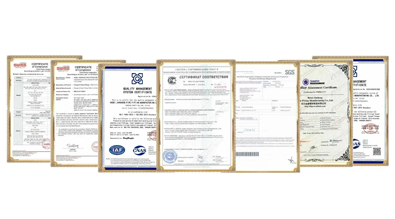
Welcome to RAYOUNG – Strong Pipes, Stronger Promise
